IGRINS: Immersion GRating INfrared SpectrographIGRINS, the Immersion GRating INfrared Spectrograph, is a joint project of the Korea Astronomy and Space Science Institute and the University of Texas at Austin (UT). The KASI Optical Astronomical Technology Group (OATG) and UT developed the IGRINS. The IGRINS is a compact high-resolution near-infrared cross-dispersed spectrograph whose primary disperser is a silicon immersion grating. IGRINS covers the entire portion of the wavelength range between 1.45 and 2.45μm that is accessible from the ground and does so in a single exposure with a resolving power of 40,000. The use of a silicon immersion grating and a compact white pupil design allows the spectrograph collimated beam size to be only 25mm, which permits a moderately sized (0.96m x 0.6m x 0.38m) rectangular cryostat to contain the entire spectrograph. The instrument has a fixed format and no moving parts within the spectrograph. Optical layout design of the IGRINS 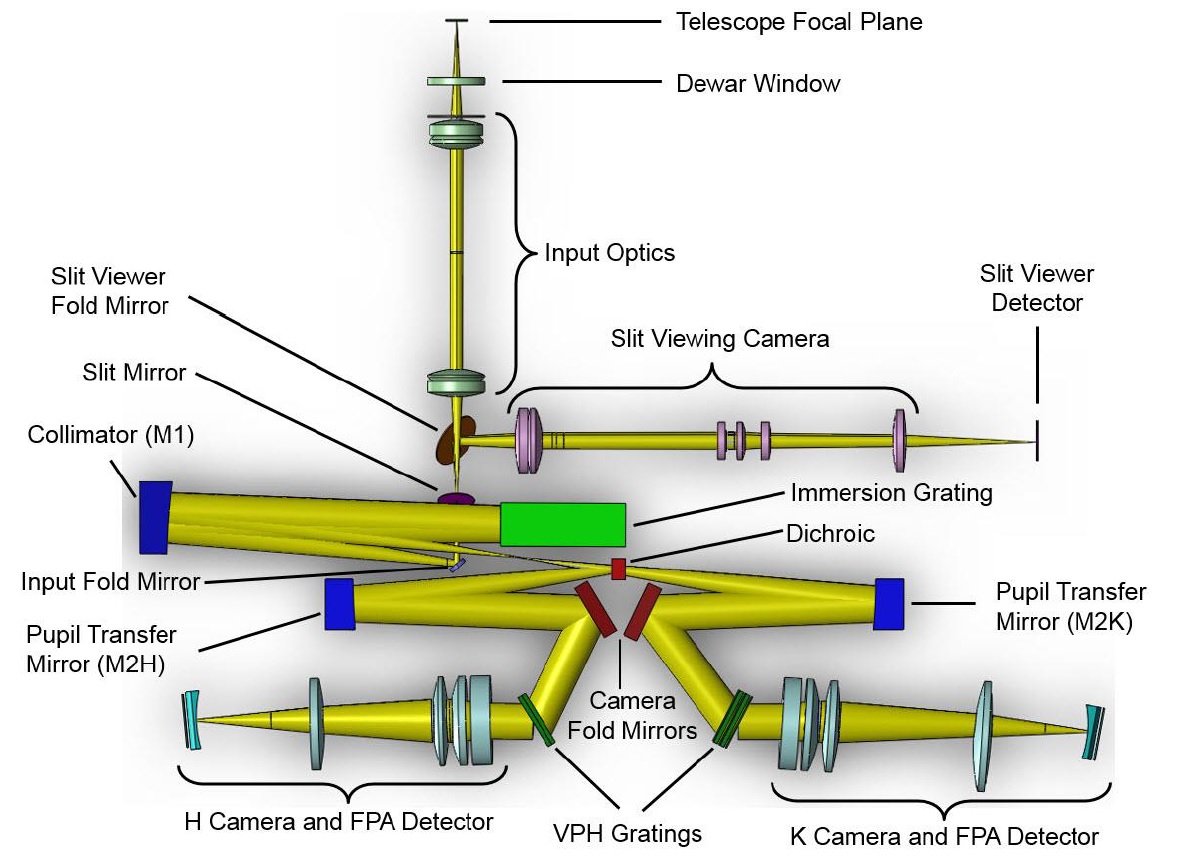 Optical bench design of the IGRINS 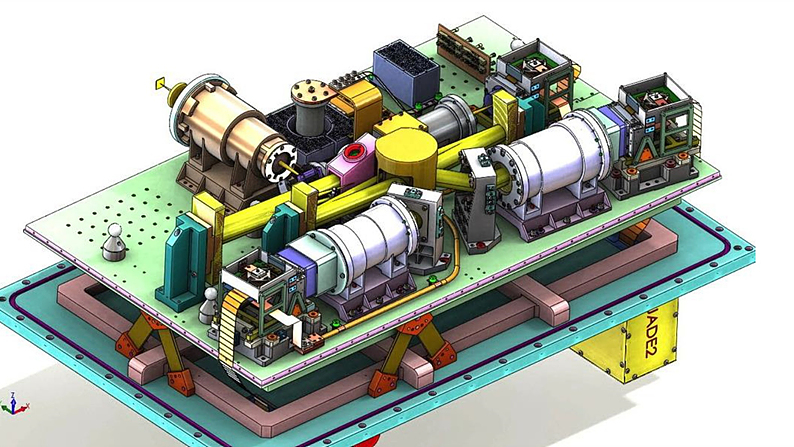 Up to now, detector size and grating technology have limited the spectral grasp of high resolution spectrographs in the near-IR. At R=40,000, the H and K atmospheric windows together have about 20,000 independent spectral resolution elements but the windows are separated by a significant range of wavelengths where the atmosphere is opaque. Good sampling of both windows in the spatial and spectral directions with a long enough slit to permit point sources and accompanying sky to be observed simultaneously requires an array size of at least 2K x 2K. The length of a diffraction grating in waves determines the maximum possible spectral resolution. The number of illuminated grooves, however, determines the number of diffraction-limited resolution elements per order. Manufacturing limitations in the ruling process limit how coarse ruled gratings can be and therefore set a lower limit on the lengths of the orders. As a consequence of these combined limitations, high resolution spectrographs for the near-IR have not been able to deliver spectra with continuous coverage of large spectral bands. Main specifications of the IGRINS
In order to profit from the sensitivity of modern IR detectors, infrared spectrographs must have all of their components at cryogenic temperatures. To maintain a high throughput, such instruments operating with natural seeing must have slit sizes comparable to the typical seeing image size. This angular scale is usually many times larger than the diffraction limited angular resolution. To reach a given resolving power with a slit m times wider than the diffraction limited angular scale, a diffraction grating must be longer in the direction of incidence by the same factor of m. This requirement drives high-resolution spectrographs to large sizes, a fact that presents significant challenges in a cryogenic instrument. Immersion gratings break the size-resolving power curve for spectrograph designs. An immersion grating of a given size made from Si has the same resolving-power slit-width product as a front-surface grating that is 3.4 times larger. Use of immersion gratings can therefore reduce cryogenic instrument volumes by an order of magnitude or more for a given resolving power and slit size. Lithographically produced Si immersion gratings also make it possible to have instrument designs with continuous wavelength coverage at high resolving power. The lithographic gratings have superbly blazed grooves that give them high efficiency in high order and the process permits coarse enough rulings to allow entire orders to fit onto a single detector. IGRINS mounted on the DCT 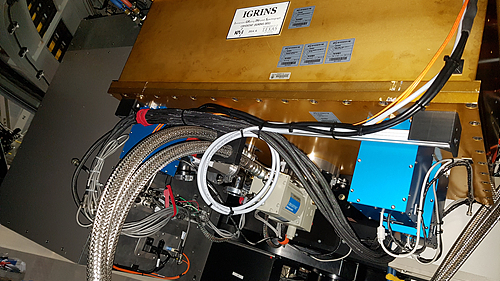 IGRINS mounted on the HJST 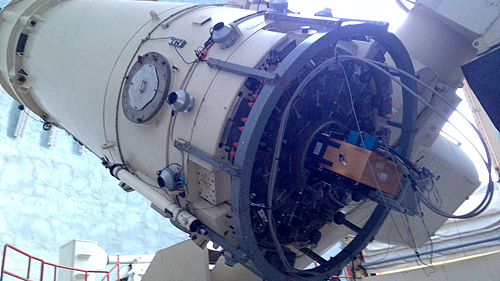 IGRINS mounted on the Gemini South 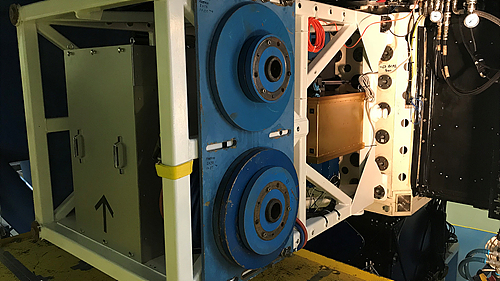 KASI and UT operate the IGRINS on the 2.7m Harlan J. Smith telescope at the McDonald Observatory (US), the 4.3m Discovery Channel Telescope at the Lowell Obervatory(US) and the 8.1m Gemini South Telescope at the Gemini Observatory(Chile). The OATG contributes to technical supports for operation and maintenance of the IGRINS. The IGRINS moves between those observatories according to the planned observation schedule. Participating institutionsDevelopment: KASI OATG, UT, Kyung Hee University
Maintenance: KASI OATG, UT Operation: KASI K-GMT Science Group, UT, Lowell Observatory, Gemini Observatory Science publications using IGRINS (ADS) |
